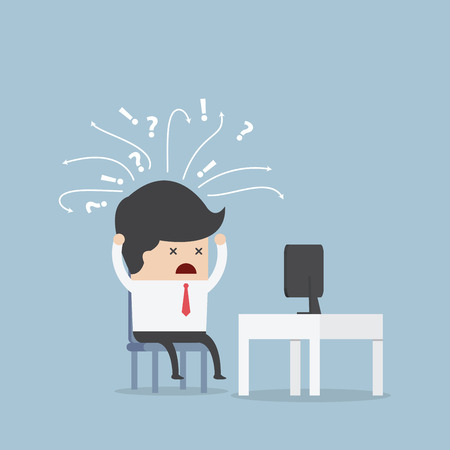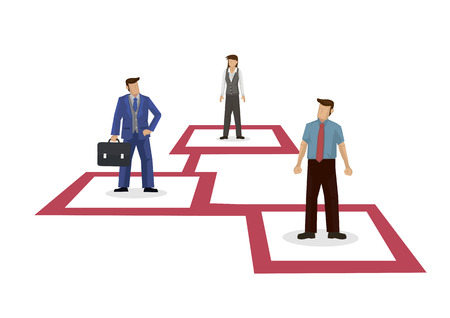Understanding Workplace Anxiety in American Offices
Workplace anxiety is a growing concern for American office workers, driven by a unique set of cultural and organizational factors. In the U.S., the emphasis on productivity, efficiency, and individual achievement often creates high-pressure environments where employees feel compelled to constantly perform at their best. This culture can amplify stress, especially when combined with demanding deadlines and the persistent need to meet or exceed expectations. Many American workers also face uncertainty regarding job security, particularly in industries subject to rapid technological change or economic fluctuations. These pressures are further complicated by workplace dynamics such as competition among colleagues, unclear communication from management, and limited work-life balance. As a result, many employees experience symptoms of anxiety, including restlessness, difficulty concentrating, and even physical complaints like headaches or fatigue. Understanding these unique triggers is the first step toward addressing workplace anxiety effectively and creating a more supportive environment for everyone in the office.
2. The Role of Mindfulness in Stress Management
Mindfulness has gained significant traction in American workplaces as a practical solution to combat stress and anxiety, especially in fast-paced office environments. At its core, mindfulness is the practice of paying intentional, non-judgmental attention to the present moment. This approach is rooted in both ancient meditation traditions and modern psychological research, making it both time-tested and evidence-based.
American office culture often values productivity, multitasking, and rapid decision-making. While these traits drive business success, they also contribute to chronic stress, burnout, and anxiety among employees. Mindfulness provides a counterbalance by encouraging workers to slow down mentally, acknowledge their thoughts and feelings without immediate reaction, and develop greater emotional resilience.
How Mindfulness Reduces Workplace Anxiety
| Mindfulness Technique | Description | Benefits for Office Workers |
|---|---|---|
| Breath Awareness | Focusing on natural breathing patterns to anchor attention | Lowers heart rate, calms nerves during stressful meetings or deadlines |
| Body Scan | Progressively noticing physical sensations from head to toe | Promotes relaxation, helps detect early signs of tension or fatigue |
| Mindful Pauses | Taking short breaks to check in with oneself throughout the workday | Improves focus, prevents overwhelm during high-pressure tasks |
| Non-Judgmental Observation | Acknowledging thoughts and emotions without self-criticism | Reduces self-imposed stress, encourages healthier coping strategies |
Integrating mindfulness into the daily routines of American office workers does not require major lifestyle changes or special equipment. Even just a few minutes of mindful breathing or reflection can make a noticeable difference in stress levels and overall job satisfaction. As more companies recognize the connection between employee well-being and organizational performance, mindfulness-based strategies are becoming a vital component of workplace wellness programs across the United States.

3. Practical Mindfulness Techniques for the Workday
Breathing Exercises to Reset and Refocus
One of the most accessible mindfulness techniques for American office workers is intentional breathing. Taking just one or two minutes for deep, slow breathing can help reset your stress response and improve concentration. For instance, try the 4-7-8 technique: inhale through your nose for four counts, hold your breath for seven counts, and exhale slowly through your mouth for eight counts. This simple practice can be done discreetly at your desk, between meetings, or before delivering a presentation to steady nerves.
Scheduled Breaks to Recharge
Building short, scheduled breaks into your day is both culturally appropriate in U.S. office environments and crucial for mental well-being. The Pomodoro Technique—working for 25 minutes followed by a 5-minute break—is popular among American professionals. Use these breaks mindfully: step outside if possible, stretch, or do a brief body scan meditation. By intentionally disconnecting from work tasks during these intervals, you allow your mind to recharge and return with renewed focus.
Mindful Meetings for Greater Engagement
Meetings are a staple of American office culture and can be transformed into opportunities for collective mindfulness. Start meetings with a minute of silence or a guided grounding exercise to set a calm tone and encourage present-moment awareness. Encourage participants to put away devices unless necessary for the meeting, fostering genuine engagement and reducing multitasking-related stress. These mindful meeting practices promote psychological safety and more productive collaboration.
Adapting Mindfulness to Fit Your Workplace Culture
The key to successful workplace mindfulness is tailoring techniques to fit both individual preferences and company culture. Some offices may welcome group meditation sessions or mindfulness workshops during lunch hours, while others may benefit from informal reminders to pause and breathe during busy times. Experiment with what works best in your environment—whether it’s solo breathing exercises at your desk or integrating mindfulness moments into team routines.
Practical Tips for Consistency
Set reminders on your phone or calendar to prompt mindfulness breaks throughout the day. Share resources like guided meditation apps with colleagues who are interested. Remember that practicing mindfulness doesn’t require perfection; even small efforts, when practiced consistently, can make a significant difference in managing workplace anxiety.
4. Adapting Mindfulness to Remote and Hybrid Workplaces
As American office culture shifts towards remote and hybrid models, integrating mindfulness practices requires thoughtful adaptation. Whether employees are working from a traditional office, their homes, or a combination of both, fostering mental well-being is crucial for productivity and satisfaction. Below are practical strategies for embedding mindfulness into various work environments commonly found across the U.S.
Mindfulness in Different Work Setups
| Work Setup | Mindfulness Strategies |
|---|---|
| In-Person Office | – Scheduled group meditation breaks – Designated quiet rooms – Desk-based breathing exercises |
| Remote (Work-from-Home) | – Guided mindfulness sessions via video calls – Calendar reminders for stretch and breathing breaks – Digital detox periods after meetings |
| Hybrid (Mix of In-Person and Remote) | – Unified mindfulness app for all staff – Flexible participation in live or recorded sessions – Virtual support groups for stress management |
Best Practices for Integration
- Normalize Mindful Pauses: Encourage short, structured breaks during the workday where employees can step away from their screens, regardless of location.
- Inclusive Scheduling: Offer mindfulness activities at varied times to accommodate different time zones and work hours.
- Cultural Relevance: Use American-centric examples and language in guided exercises to boost relatability among U.S.-based teams.
Promoting Engagement Across Teams
Managers play a pivotal role in setting the tone. Leading by example—such as joining virtual mindfulness sessions or discussing personal benefits—helps normalize these practices. Creating team challenges around daily mindful minutes or gratitude journaling can also increase participation, bridging the gap between remote and on-site workers.
Measuring Success
Regular check-ins and anonymous surveys can help gauge the effectiveness of these strategies. Tracking participation rates and collecting feedback ensures that mindfulness initiatives remain relevant and impactful across diverse American workplaces.
5. Building a Supportive Office Culture
Creating a supportive office culture is essential for effectively addressing workplace anxiety and promoting mindfulness among American office workers. When employees feel safe to discuss mental health concerns, it not only reduces stigma but also fosters overall well-being and productivity.
Encouraging Open Conversations
Leadership should actively promote open dialogue around mental health by normalizing these discussions in meetings, newsletters, and team check-ins. Providing resources such as Employee Assistance Programs (EAPs) and clearly communicating them demonstrates that the company values employee well-being. Hosting regular workshops or training sessions on mindfulness and stress management further shows commitment from management.
Establishing Clear Policies and Resources
HR departments can develop clear mental health policies that outline support systems available to staff. This includes flexible work arrangements, mental health days, and access to counseling services. Ensuring these policies are visible and easy to understand empowers employees to seek help without fear of negative consequences.
Promoting Peer Support Networks
Peer support groups or mentorship programs can be instrumental in creating a sense of community within the office. Encouraging employees to connect, share experiences, and offer support helps reduce feelings of isolation often associated with workplace anxiety. Recognizing employee efforts to support colleagues can reinforce a culture of empathy and understanding.
A proactive approach to building a supportive office culture not only helps combat workplace anxiety but also attracts and retains talent who value a healthy work environment. By fostering open conversations, providing accessible resources, and encouraging peer connections, organizations lay the groundwork for mindful, resilient teams.
6. Measuring Progress and Sustaining Mindfulness Habits
Tracking Personal Progress in Reducing Anxiety
For American office workers, measuring the effectiveness of mindfulness-based strategies is essential to ensure continued growth and anxiety reduction. One practical approach is to keep a daily or weekly journal documenting stress levels, triggers, and how mindfulness techniques were applied. Many individuals also find value in using mobile wellness apps that track meditation sessions, mood changes, and physiological markers like heart rate variability. Regular self-reflection—such as setting aside a few minutes each Friday to review progress—can help identify patterns, reinforce positive habits, and highlight areas for improvement.
Evaluating Organizational Impact
Organizations can support their teams by implementing regular surveys or assessments focused on workplace well-being and perceived stress. Anonymous feedback forms allow employees to share their experiences with mindfulness initiatives without fear of judgment. HR departments may also monitor indicators such as absenteeism, turnover rates, and productivity metrics before and after introducing mindfulness programs. By comparing these data points over time, organizations can gauge the overall impact and make informed decisions about future investments in employee wellness.
Sustaining Mindfulness Routines Long-Term
The key to lasting benefits lies in consistency. Encourage employees to set reminders for short mindfulness breaks throughout the workday or join recurring group meditation sessions. Office leadership can integrate mindfulness check-ins into team meetings or offer incentives for maintaining participation in wellness activities. Providing access to resources—like guided meditation recordings or on-site yoga classes—helps sustain engagement and normalize mental health conversations within the company culture.
Celebrating Milestones and Adapting Strategies
Acknowledge individual and team achievements by celebrating milestones, whether it’s reaching 30 consecutive days of practice or observing measurable reductions in reported anxiety levels. Recognize that needs may change over time; periodically reassess both personal routines and organizational programs to ensure they remain relevant and effective. By embedding measurement and adaptability into your approach, American office workers and organizations alike can build resilience against workplace anxiety while fostering a healthier, more mindful environment.


